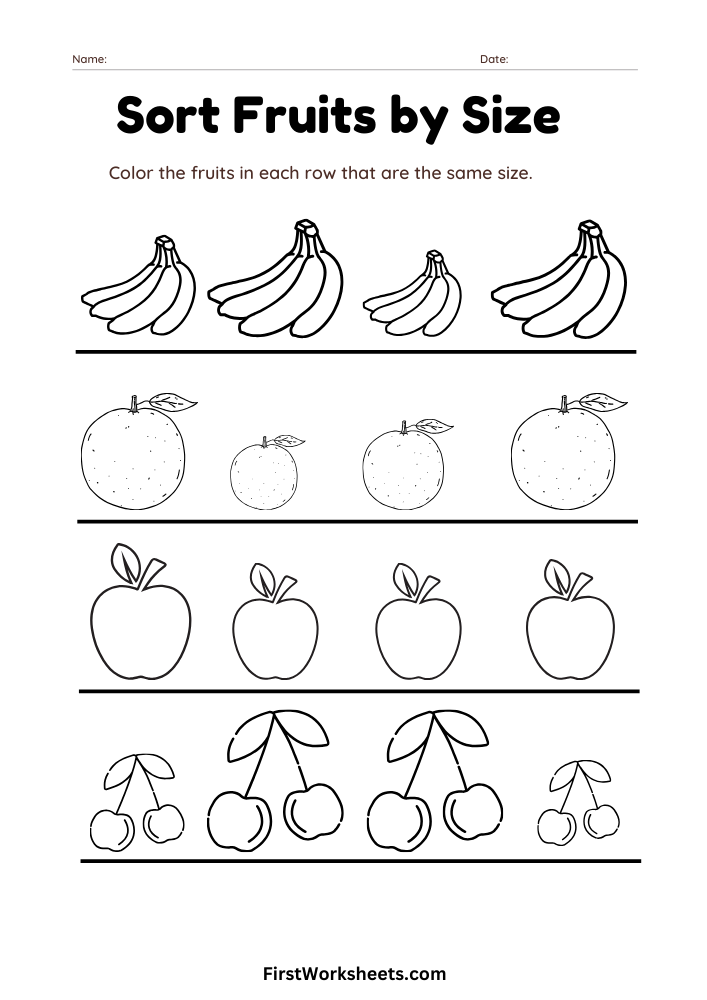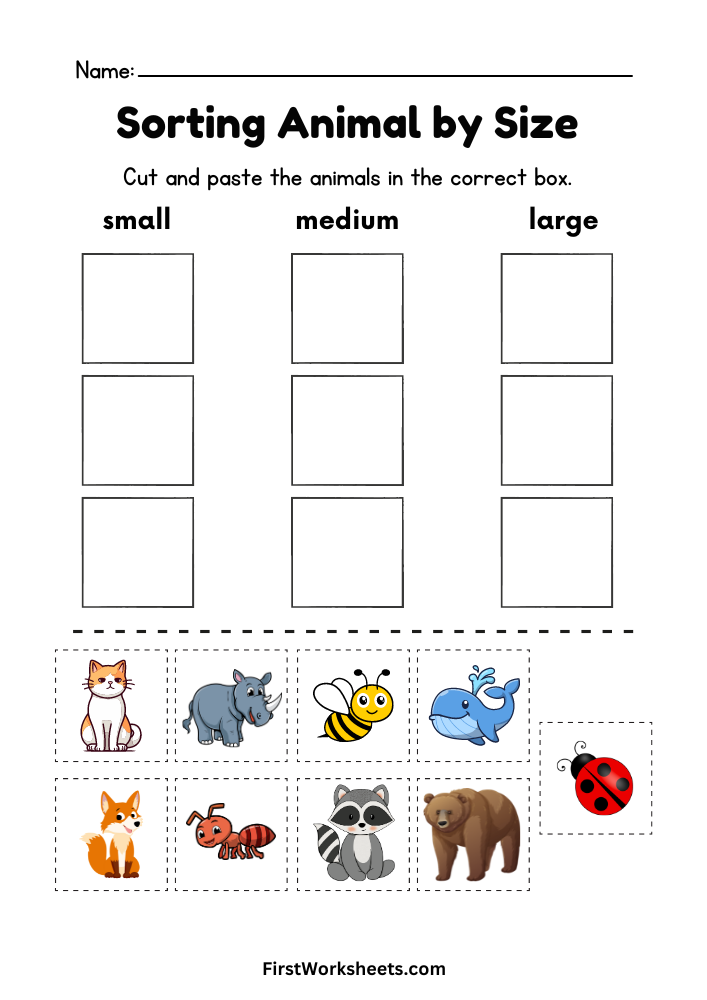Sorting Shape, Color, Size Worksheets
Sorting Shape, Color, and Size Worksheets are educational tools designed to help children develop early cognitive skills related to categorization, comparison, and problem-solving. They play a critical role in introducing basic concepts of mathematics, logic, and reasoning, and are often used in preschools, early elementary classrooms, and at home to promote hands-on learning.
Purpose of Sorting Worksheets
These worksheets are geared toward teaching children how to recognize and distinguish between different attributes, such as shape, color, and size. The key learning objectives include:
- Pattern recognition: Children learn to identify recurring patterns based on visual attributes.
- Categorization skills: They learn to group objects by common features, which helps with organization and logical reasoning.
- Pre-mathematical thinking: Sorting is foundational for understanding mathematical concepts like grouping, comparing, counting, and eventually understanding numbers, operations, and geometric properties.
- Problem-solving skills: Sorting helps children develop the ability to think critically and solve simple puzzles.
- Fine motor skills: Engaging with these worksheets typically involves cutting, gluing, coloring, or drawing, which strengthens hand-eye coordination.
Components of Sorting Worksheets
These worksheets can focus on sorting by:
- Shape: Circles, triangles, squares, rectangles, stars, and other geometric figures.
- Color: Basic colors such as red, blue, yellow, green, and more advanced shades as children progress.
- Size: Objects that are big, medium, and small, teaching concepts of comparison.
Worksheets often present children with a variety of objects that vary in one or more of these attributes. The child is asked to sort or categorize the objects by a particular feature. Common tasks include:
- Drawing a line from an object to its matching shape, color, or size.
- Cutting out shapes and pasting them into the correct groups.
- Circling or coloring objects based on a specified criterion (e.g., all the red objects or all the circles).
- Arranging shapes or objects in order of size, from smallest to largest.
Cognitive and Developmental Benefits
- Visual Discrimination: By comparing and contrasting attributes like shape, color, and size, children improve their ability to notice differences and similarities, which is crucial for later reading and math skills.
- Sorting and Classifying: Sorting is the beginning of logical thinking. By learning to sort objects, children begin to understand how items can be grouped by shared characteristics, a skill important for more advanced mathematical and scientific learning.
- Vocabulary Development: As children engage with sorting activities, they learn new words such as “circle,” “square,” “big,” “small,” and the names of colors. Teachers and parents can reinforce this by asking questions like “Which one is bigger?” or “Can you find a red shape?”
- Concentration and Attention: Sorting worksheets require children to focus on the task at hand, improving their ability to concentrate for longer periods.
- Sequencing and Ordering: When asked to order objects by size, children begin to understand ordinal concepts, which is a precursor to understanding sequences in math.
Examples of Sorting Activities
- Shape Sorting: Worksheets provide different geometric figures, and the task may involve grouping similar shapes or matching them to outlines. For example, children may be asked to place all the circles in one column and the squares in another.
- Color Sorting: A worksheet could show multiple objects of different colors, such as red apples, blue skies, and yellow suns. The task would be to sort or group items by color.
- Size Sorting: This type of worksheet presents objects of varying sizes (e.g., small, medium, large), and children are asked to group similar-sized objects or arrange them in order from smallest to largest.
- Combined Sorting: More advanced worksheets may combine multiple attributes. For instance, children might be tasked with grouping objects that are both red and circles or sorting shapes by both size and color.
Sorting shape, color, and size worksheets are a fundamental tool in early childhood education, laying the groundwork for more advanced cognitive skills in math, science, and language development. By engaging children in fun, hands-on activities, these worksheets foster critical thinking, problem-solving, and the ability to make connections between objects and concepts in their world.










